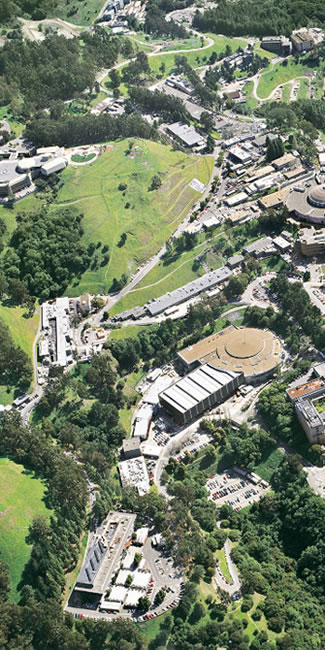

About the Lab
The Lawrence Berkeley National Laboratory (Berkeley Lab) was founded in 1931 by Ernest O. Lawrence, who won the Nobel Prize in physics in 1939 for his invention of the cyclotron. Lawrence’s invention led to a Golden Age of particle physics and revolutionary discoveries about the nature of the universe. Under the stewardship of the University of California, which manages the Lab for the Department of Energy, Berkeley Lab has evolved from the birthplace of nuclear science and medicine into a multidisciplinary research facility advancing the forefront of scientific knowledge and addressing problems of national and global concern. Today, Berkeley Lab performs research in nanoscience and advanced materials, the life sciences, computing, energy and earth sciences, physics and cosmology. The Lab also operates a Homeland Security office dedicated to leveraging fundamental scientific research to develop methods for ensuring homeland safety.
Since its inception, Berkeley Lab’s location on the hillside above the University of California at Berkeley has offered a unique opportunity for scientific and academic partnerships and has helped to foster the academic excellence that is the hallmark of the Lab’s scientific endeavors. Of Berkeley Lab’s staff of approximately 4,000, more than 250 faculty/scientists hold joint appointments with UC Berkeley and other UC campuses. In addition, nearly 800 students and postdoctoral fellows are employed each year, along with more than 3,000 participating guests from institutions around the world.
With an annual budget of more than $500 million, Berkeley Lab has a sizable regional economic impact as one of the 15 largest employers in the area. The Lab interacts with the private sector in a growing number of collaborative research projects intended to transfer research know-how into the national economy. A number of corporations supply both funding and expertise for many joint projects that range from building the next generation of semiconductors to developing new tests for heart disease risk.
In addition to its fundamental research, Berkeley Lab’s research centers and user facilities provide intellectual resources, services, infrastructure and unique experimental facilities not found anywhere else in the world. They include the Advanced Light Source, the National Energy Research Scientific Computing Center, the Energy Sciences Network, the National Center for Electron Microscopy and the Joint Genome Institute.